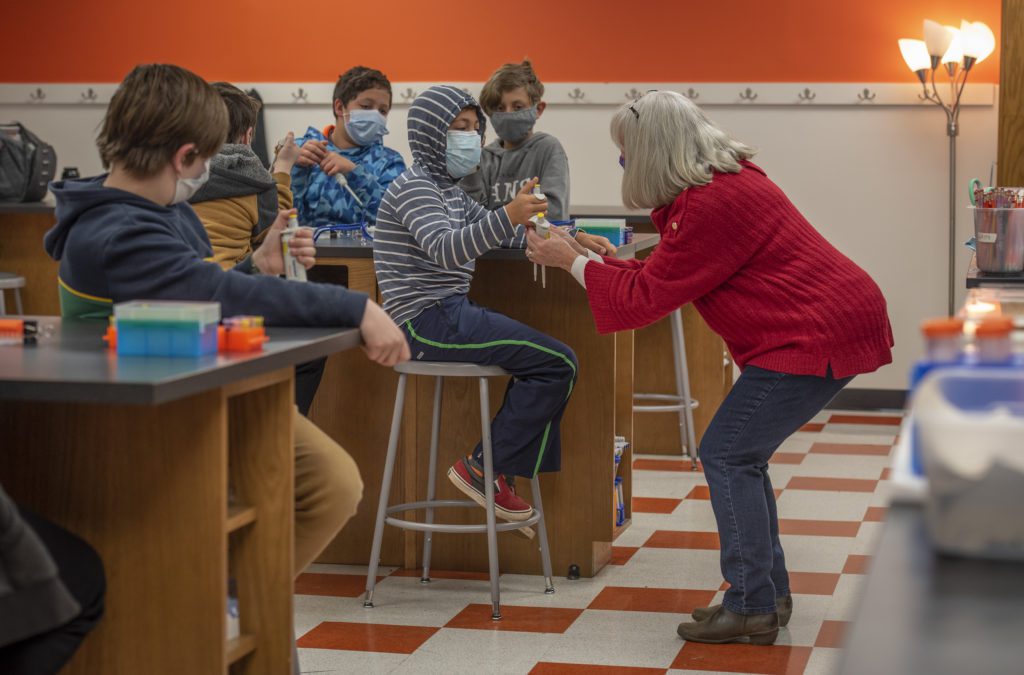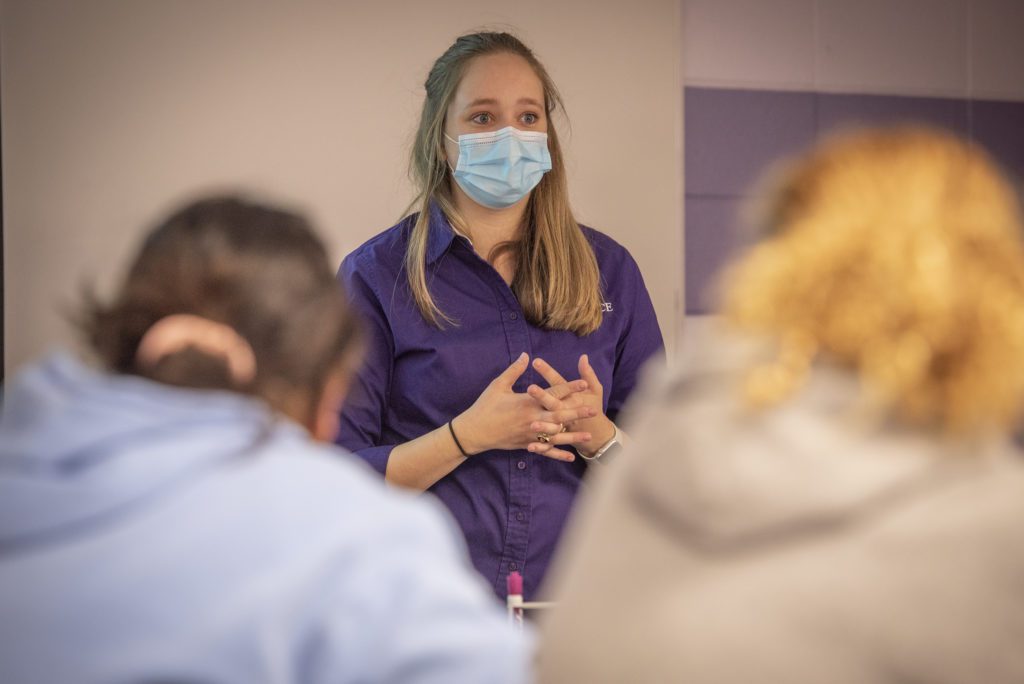Clemson University issued the following announcement on December 19.
Clemson University’s Science Outreach Center is a prime example of why Clemson has become one of the nation’s premier land-grant schools. As a land-grant university, Clemson is bound by a sacred covenant to serve the people of South Carolina. That obligation includes implementing outreach programs that provide educational opportunities to young people who wouldn’t necessarily have access to them otherwise.
The Science Outreach Center was created not only to provide those opportunities but to break down perceived barriers to careers in science by igniting a passion for STEM (science, technology, engineering and math) fields using innovative programs that engage, entertain and encourage. The goal is to inspire more young people to pursue careers in STEM professions, which have historically been sorely lacking in numbers and diversity.
“As a former high school science teacher, I have a passion for creating equitable science learning experiences for all students, and all too often I’ve seen students who had an initial interest in science decide it wasn’t for them,” said Renée Lyons, science education outreach director for the College of Science dean’s office. “Science programming isn’t always accessible or inviting to everyone. There are barriers to participation that sometimes get in the way of individuals feeling like they belong in science. My goal is to search out those barriers and design programming welcoming and accessible to everyone.”
Lyons said one obvious barrier to participation is finances, which means she stays swamped seeking out grants and sponsorships for Science Outreach Center programming. The center was recently awarded a grant from the Lipscomb Family Foundation, bringing hundreds of fifth-graders from Title I schools in Lexington to Clemson. The students will tour the campus, engage with scientists, and participate in one of the center’s field trip labs.
Those labs operate year-round. Case in point: As activity at the University was winding down for the winter holidays, the Science Outreach Center brought 32 elementary, middle and high-school students to campus to participate in two of its labs: the high school students in a DNA fingerprinting crime scene lab, and the elementary and middle schoolers in a “Mystery of the Dead Hemlock Tree” lab that presents the real-life problem of dying hemlock trees throughout the Appalachian mountains and asks students to do a series of experiments using DNA analysis to find the cause.

Kathleen Brooks (red sweater), biochemistry student assistant, teaches a group of home-schooled middle school students from around Upstate South Carolina during a “Mystery of the Hemlock Tree” lab with Clemson University’s Science Outreach Center, Dec. 15, 2021. (Photo by Ken Scar)
Katherine Mulholland, a STEM education specialist for the College of Science, said the hemlock lab makes an impact because it submerges the students in a real situation.
“This is a real-life problem,” said Mulholland. “This is what’s happening in our environment. If you go hiking in the forest you will see these dead trees if you’re observant.”
Excited exchanges echoed around the classroom and grew in frequency as the students teamed up and used chemical reactions to analyze vials of DNA samples and match them to the DNA from four unknown pests. The exercise played out like a crime scene investigation, keeping the students engaged. In the end the students discovered the cause of the widespread devastation is a tiny insect called the hemlock woolly adelgid, native to Japan. Hordes of the little pest drain water and nutrient stores, killing the host tree within three to five years of infestation.
“It’s really amazing seeing the students come into the lab,” said Mulholland. “Some of them have never experienced a lab setting before. It makes them feel like scientists, using real laboratory equipment and manipulating chemicals . . . you can just see the amazement and awe they get from doing this.”

A group of home-schooled boys listens to STEM education specialist Cathy Brooks during a “Mystery of the Dead Hemlock Tree” lab with Clemson University’s Science Outreach Center in Jordan Hall, Dec. 15, 2021.
The “Mystery of the Dead Hemlock Tree” field lab is an excellent example of how the Science Outreach Center capitalizes on the compelling scientific discoveries consistently taking place in Clemson’s numerous research labs.
“We have some amazing scientists at Clemson whose research is saving lives, solving societal problems, and making our planet a safer place to live,” said Lyons. “If you ask our Clemson scientists what motivated them to become the scientists they are today, most of them will tell you about inspiring science experiences they had when they were young. That is why the Science Outreach Center is so important. We exist to show youth the possibilities and discoveries they can make with science.”
This year, the Science Outreach Center expanded its scope from the terrestrial to the celestial by partnering with the Pisgah Astronomical Research Institute (PARI), a nonprofit astronomical observatory located on a 200-acre decommissioned satellite-tracking facility in the Pisgah National Forest near Balsam Grove, North Carolina, to launch a space and astronomy camp. Much of the equipment at PARI was built and used by NASA and the Department of Defense, including four massive radio telescopes that are still operational. PARI’s skies regularly exceed the International Dark-Sky Association’s Gold level rating for darkness, Lyons said, making it a perfect spot for viewing outer space.
“It is wonderful up there, and you couldn’t ask for a better place to explore the universe,” said Lyons.“Our goal for Space Camps at PARI is to provide middle- and high-school students with the opportunity to explore the universe with state-of-the-art STEM technology, including NASA-built radio telescopes, research-grade optical telescopes and one of the world’s largest archives of astronomical data. Students are mentored by astronomers, conduct authentic scientific research, explore STEM careers, visit Clemson University space and astronomy labs, and engage in engineering and design challenges that nurture their innovation and problem-solving skills. What a great way to spend your summer!”

Katherine Mulholland, a STEM education specialist for Clemson University, teaches a group of home-schooled high school students at a Science Outreach Center lab in Jordan Hall, Dec. 15, 2021. (Photo by Ken Scar)
During the COVID-19 pandemic lockdowns, Lyons and her team were faced with the daunting challenge of remotely engaging students in scientific thinking. Virtual programming presented an obvious barrier to capturing students’ attention — with science lessons no less — and holding it. The Science Outreach Center team solved the problem by developing hands-on virtual science experiences using prepackaged lab materials that were mailed to participants.
“We found by mailing experiment supplies to kids’ houses, we could engage kids in hands-on, inquiry-based lab experiments remotely,” said Lyons. “The students were thinking like scientists and having a blast! Over the past year and a half, my team has engaged over 1,000 kids in our virtual STEM labs and we’ve had students from as far as California and the Dominican Republic attend.”
Other new programs born from the Science Outreach Center team’s passion for creating equitable programming include a crime scene investigation lab, designed through a partnership with Spartanburg’s School for the Blind that accommodates the needs of visually impaired students and programming for homeschooling families.
“Just this year, we started offering virtual STEM Club for homeschoolers and also invited them to visit us on campus for homeschool science days. They have been a huge success, with families traveling from Tennessee, Georgia, North Carolina and the South Carolina coast to attend.”
Lyons encourages teachers and parents to check out all of the center’s resources. It has day camps for kids ages 8-12 (Engineering & Design, Chemistry, Food Science and Physics) and residential camps for middle and high schoolers (PARI Space Camps and Summer Scholars). K-12 teachers are encouraged to join one of the field trip lab experiences, all aligned to South Carolina state science standards. “I want people to know all of the resources that the Science Outreach Center has to offer them,” said Lyons. “Teachers, parents, students . . . the Science Outreach Center exists for you!”
Original source can be found here.




 Alerts Sign-up
Alerts Sign-up